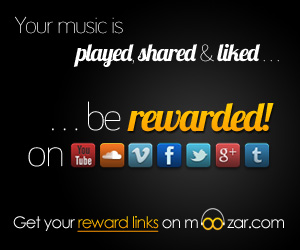Apple’s keynote at WWDC covered a lot of ground… Giving us a preview of the new operating system “OS X Mavericks” with new features such as finder tabs, tags to better organize your documents and multiple displays. We saw demos of iBooks, new map functionality and the new MacBook Air. Tim Cook announced that there are now 900 apps in the App Store, boasting $10B paid out to developers ($5B of that in just the last year, demonstrating the rapid growth and success of this platform). iOS 7 even looks impressive with a complete design overhaul that is elegant, cohesive and thoughtful.
But we were VERY curious about the expected announcement of Apple’s new radio platform – hesitantly called iRadio by the digerati of music tech. SoundCtrl reported via CNET last week that Apple struck a licensing deal with both Warner Music Group and its publishing arm, Warner Chappell, bringing the free Internet radio product that much closer to launching. Sony, the last hold out of the majors, signed on late last week.
There were a few things we expected (via this morning’s post from Peter Kafka of AllThingsD):
- iRadio is meant to be a “Pandora-plus” offering: It will be free, and will give listeners more control over their music than Pandora or other Web radio services, but not as much as paid subscription services like Spotify or Google Play Music All Access (they really call it that).
- Like most digital music services, Apple will pay the music owners a fraction of a penny every time someone plays one of their songs. Unlike most digital music services, Apple also plans to sell advertising, and will give music owners a cut of that, too.
Here’s what we saw…
- It’s called iTunes Radio and is built into Apple’s Music app all iOS devices, into iTunes on your desktop, and even can be pulled up on your Apple TV
- It works a lot how we expected it to… like Pandora, you can create listening stations that are based off of an artist, or a particular song, or from a list of genres. There are also “Featured Playlists” created by Apple that you can make your own by telling iTunes Radio whether you like a particular song, etc. You can also skip songs, though Apple didn’t tell us how many in a row.
- Unlike Pandora, purchasing music and going back through your history is a seamless process… every song has a download button that shows what each song costs. A tap of that button will instantly charge your iTunes account and add the song to your library. And since iTunes Radio is a cohesive part of the Music application, you can track every song you listened to together – either through your own personal collection OR through the radio service.
- The service is free with ads or if you’re a iTunes Match subscriber, free with NO ads.
- The design across the entire Music App (your collection + radio) is generally more graphics-based than the previous design which was more library-esk… for example, turning your iOS device horizontally automatically brings up a checkerboard of album art for you to swipe through.

picture via Tech Crunch
So what does this mean?
We didn’t hear much about the deal structure Apple cut with the major labels yet, but you can bet that even if advertising will generate some revenue for artists on top of their pretty insignificant cuts from streaming… it’s still going to be a low yield business for them. Ironically, the amount of money Apple is likely dishing out to labels & publishers must be astronomical.
Of course, Apple isn’t out to save the music industry by creating a music platform that actually pays artists… their goal likely isn’t even to generate revenue for themselves directly through iTunes Radio. Their goal is to sell more iOS devices, laptops, etc. And with the addition of a free music discovery platform that is already integrated into a system which is widely adopted by music consumers (iTunes), I expect that’s a goal iTunes Radio will most definitely help them reach.
















Comments are closed.